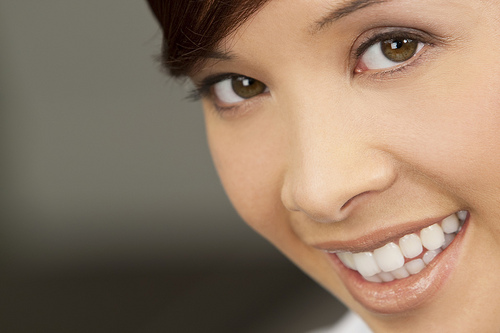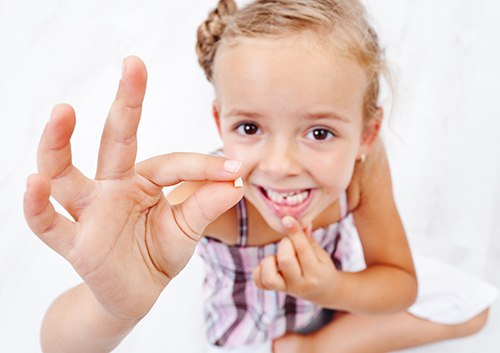October 16th, 2018

At Kirk Fishbaugh Dentistry, we understand that getting high-quality sleep is vital to maintaining your overall health. Insufficient sleep can lead to an inability to concentrate, motor vehicle accidents, and difficulty performing at work. Since approximately 18 million Americans suffer from sleep apnea, this poses a significant public health problem. If you think you may have sleep apnea, talk to Dr. Kirk Fishbaugh and our team about devices that can help you get a good night’s rest.
What is sleep apnea?
Sleep apnea is a relatively common disorder in which breathing stops or becomes very shallow during the night. These bouts of paused breathing may last a few seconds or as long as several minutes. When 30 or more breathing interruptions occur per hour, sleep apnea leads to dramatic reductions in sleep quality. In many cases, this condition is caused by your airway becoming blocked or collapsed during sleep.
Anyone can get sleep apnea, but there are certain factors that increase your risk. Having small airways, being overweight, being male, or having a family history of sleep apnea increases the likelihood that you will develop the disorder. If you think you have sleep apnea, visit highly encourage you to visit our Green Bay, WI office for a thorough physical exam, comprehensive medical history, and a sleep study.
Treatment Options
Several treatment avenues are available for people with sleep apnea. One popular option is to wear an oral appliance. For example, a mandibular advancement device (MAD) looks like a sports mouthguard and slightly repositions your jaw, to keep your airway unobstructed. Another option is a tongue-retraining device (TRD), which holds your tongue in place to ensure that your airway stays open during the night.
For individuals with mild-to-moderate sleep apnea, dental devices are a smart option. Many patients enjoy improved sleep, reductions in snoring, and less fatigue during daytime hours. If you’re curious about getting an oral appliance to help with your sleep apnea, please consult our team at Kirk Fishbaugh Dentistry. After a consultation and examination, we can fit the type of device that works best for your condition.
October 9th, 2018

Your regularly scheduled dental checkups with Dr. Kirk Fishbaugh are not just meant to make your smile prettier and healthier. Your mouth’s health has an important impact on your overall physical health as well!
While you may brush your teeth twice a day and even floss, we would like to remind you that dental checkups with Dr. Kirk Fishbaugh every six months aren’t just about addressing problems and reacting, they are about cavity and gum disease prevention.
In addition to a twice yearly thorough teeth cleaning and polishing at Kirk Fishbaugh Dentistry, these regular visits help us detect and prevent the onset of tooth decay and gum disease. During your visit, we’ll check the health of your mouth, teeth, gums, cheeks, and tongue. We’ll also check old fillings and restorations, as these can wear away over time from constant chewing, grinding, or clenching.
It’s important to know that the majority of dental problems do not become visible or painful until they are highly advanced. And, unfortunately, serious oral issues are painful and expensive to treat.
While Dr. Kirk Fishbaugh and our team always strive to provide unmatched dental care for you and your family, we are also committed to your overall wellness as well! A deep cleaning twice a year is the best way to prevent any problems that may have gone unseen. If you are overdue for your next cleaning, please give us a call to schedule an appointment at our Green Bay, WI office!
October 2nd, 2018

Coffee is one of the most popular drinks in the world. Many people have a cup, or two, or even three a day. It’s common to drink it in the morning to wake up and get ready for the day, as an afternoon pick-me-up, or just to catch up with a coworker or friend.
These days there are many different kinds of coffee flavors to enjoy, so it’s almost impossible for a person not to like it. But as delicious as coffee is, it’s worthwhile to be aware of the effects it has on our dental health.
Coffee contains a lot of tannic acid, which is what causes its dark color. Tannic acid ingrains itself into the grooves of tooth enamel, and that leads to serious stains. In addition to containing tannic acid, the fact that coffee is generally served very hot makes your teeth expand and contract, which allows the stains to penetrate even farther into the enamel.
Dr. Kirk Fishbaugh and our team know it’s not easy to kick the caffeine habit. If you find yourself needing a cup of joe every day, here are some helpful tips to consider:
- Switch to decaf coffee.
- Make it a habit to drink a glass of water with your coffee to rinse away the acid.
- Try enjoying your coffee with a straw so the tannic acid makes less contact with your front and lower teeth.
- Pop in a piece of gum after your coffee to help prevent a dry mouth.
If you’re feeling ambitious, you might find that setting a limit on the number of cups of coffee you have per week or even per day can be helpful. You are always welcome to contact our Green Bay, WI office to discuss potential whitening options as well. We’re here to help!
September 25th, 2018

While the last baby teeth generally aren’t lost until age ten or 11, most children stop believing in the tooth fairy by the time they're seven or eight. Of course, children are more than happy to play along with the game when there’s money at stake! While it is impossible to know what the tooth fairy does with all those teeth (are they labeled and stored like museum pieces in a giant fairytale castle?), it is possible to trace the history and myth of the tooth fairy to several cultures and traditions. Dr. Kirk Fishbaugh and our team learned about some interesting myths about the tooth fairy!
The Middle Ages
Legend has it that Europeans in the Middle Ages believed a witch could curse someone by using their teeth, so it was important to dispose of baby teeth correctly. Teeth were swallowed, buried, or burned. Sometimes baby teeth were even left for rodents to eat. Despite being pests, rodents were valued for their strong teeth; it was generally believed a tooth fed to a rodent would lead to the development of a healthy and strong adult tooth.
Eighteenth Century France
The tooth fairy myth began to show more characteristics of a conventional fairytale in 18th century France. La Bonne Petite Souris, a bedtime story, tells the strange tale of a fairy that changes into a mouse to help a good queen defeat an evil king. The mouse secretly hides under the evil king’s pillow and defeats him by knocking out his teeth.
Scandinavian Lore
So, why does the tooth fairy leave money under the pillow? The idea of exchanging a tooth for coins originated in Scandinavia. Vikings paid children for a lost tooth. Teeth were worn on necklaces as good luck charms in battle. While the idea of exchanging a tooth for coins quickly spread throughout the rest of Europe, a fierce, horn-helmeted Viking is far cry from the image of a fairy collecting teeth.
While the tooth fairy as children know her today didn’t make an appearance until the 1900s, tooth myths and rites of passage have existed in numerous cultures since the dawn of time.



